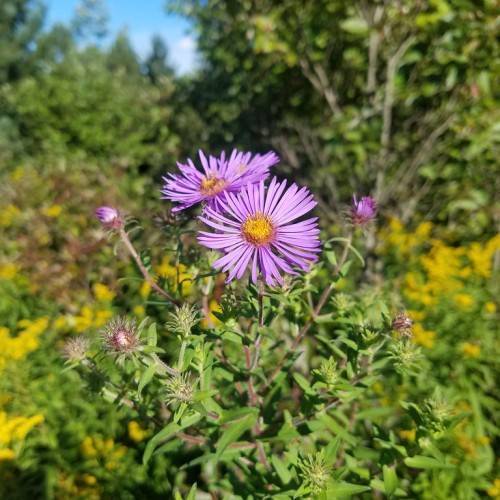
swamp aster
Symphyotrichum puniceum
Cycle:
Herbaceous Perennial
Watering:
Frequent
Hardiness Zone:
2 - 9
Flowers:
Flowers
Sun:
Full sun
Soil:
Loamy Humus
Leaf:
Yes
Growth Rate:
Low
Maintenance:
Low
Drought Tolerant:
Yes
Salt Tolerant:
Yes
Care Level:
Medium
watering
Water swamp aster regularly during the growing season. Generally, it prefers to be kept moist and full of water at all times. During the summer, water it daily or every other day, enough so that the soil is consistently moist but not overly wet. In hot, dry, or windy weather, you might need to water it more frequently. In the winter, water it less often, only when the top inch or 2 of soil is dry. Be sure to keep the soil moist but never wet.
sunlight
Swamp aster (Symphyotrichum puniceum) is a wetland loving perennial which grows in areas that retain water in the soil, such as marshes, marshes and wet meadows. Sunlight is important for this plant species in order to flower and stay healthy, however the amount and frequency of sunlight for the swamp aster may vary depending on its location. In the northern parts of its range, swamp aster typically grows in full sun most of the day. In the southern parts of its range,partial shade is more common. For maximum flowering, swamp aster will typically need 4 to 6 hours of direct sunlight per day. It will likely do well even with less sun, but the amount of flowering will not be as profuse. In addition, the timing of sunlight is important. Swamp aster prefers sun in the morning and late afternoons. Avoiding the intense mid-day sunlight will help protect the plant from intense heat and water stress as well as potential disease damage caused by the extremely hot temperatures.
pruning
The Swamp Aster (Symphyotrichum puniceum) should be pruned annually, in the early spring before new growth begins. Pruning should involve removal of dead and damaged stems. Next, thin and shape the plant if desired, with pruning shears, removing any weak, overly long or spindly stems, and in general shaping the perennial for a more pleasing appearance. In late spring to early summer, prune the flower stems to encourage bushiness and more flowers, down to the second pair of leaves. Finally, deadhead fallen flowers during the flowering season to encourage more flowering shoots.
